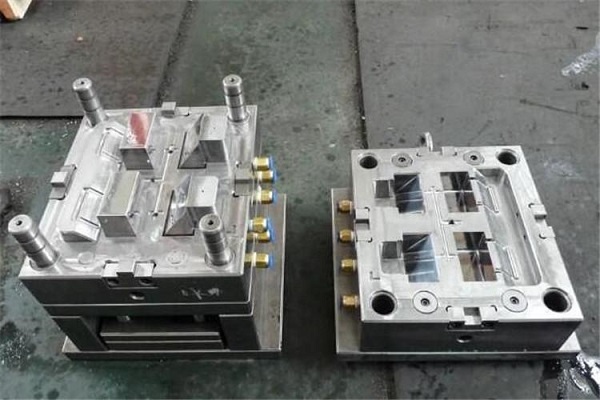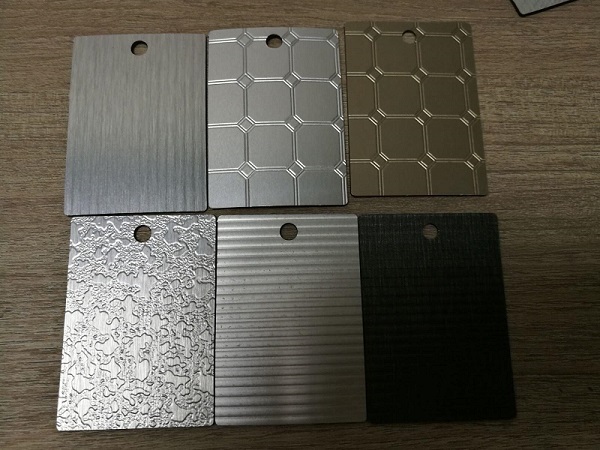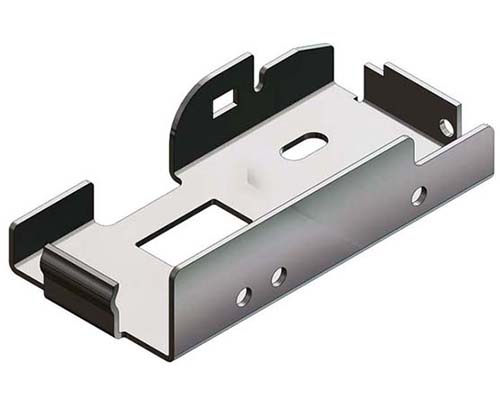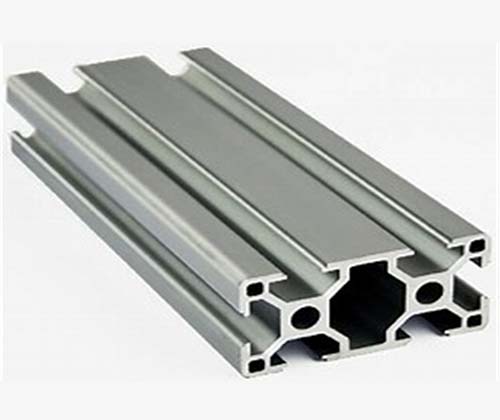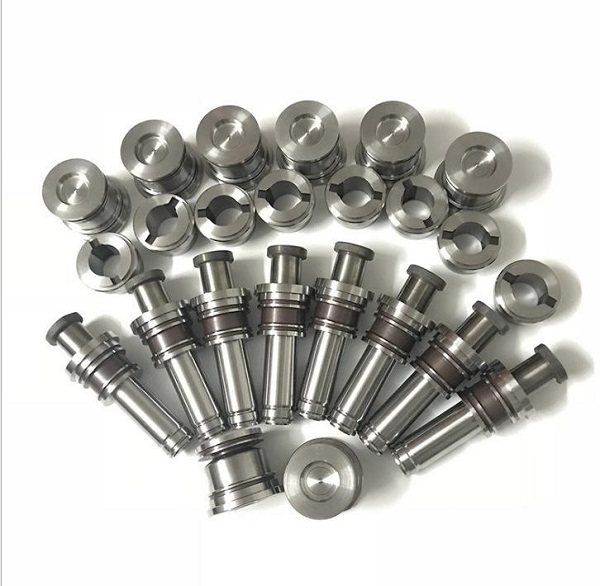If you’re involved in architecture, construction, or a related field, you’ve probably wondered: What exactly is architectural metal fabrication, and how does it impact building projects? Simply put, architectural metal fabrication is the process of cutting, bending, shaping, and assembling metal materials to create custom components for buildings. These components range from decorative elements like railings and facades to structural parts such as beams and columns. Unlike general metal fabrication, it’s tailored specifically to meet the aesthetic, functional, and structural demands of architectural design—blending artistry with engineering to turn design concepts into tangible, durable building features.
The Core Process of Architectural Metal Fabrication
Understanding the step-by-step process of architectural metal fabrication helps you better collaborate with fabricators and ensure your project stays on track. While each project is unique, most follow a similar workflow that balances precision and creativity.
First, the process starts with design and engineering. Fabricators work closely with architects to translate 2D or 3D designs into detailed shop drawings. These drawings include exact measurements, material specifications, and assembly instructions. For example, when working on a hotel lobby’s metal staircase, the fabricator will use software like AutoCAD or SolidWorks to map out every tread, riser, and support bracket, ensuring they fit perfectly within the lobby’s dimensions.
Next comes material selection and preparation. Once the design is finalized, the right metal is chosen (more on materials later) and cut to size. Common cutting methods include laser cutting, which offers precision up to 0.1mm, and plasma cutting, ideal for thicker metals. A case in point: A recent commercial office project required 500 aluminum panels for the facade. The fabricator used laser cutting to achieve intricate patterns on each panel, ensuring consistency across all pieces.
After cutting, the metal goes through forming and bending. This step shapes the metal into the desired form using tools like press brakes and rollers. For instance, to create curved metal railings for a residential balcony, a fabricator might use a roller to bend stainless steel tubes into smooth arcs, checking the curvature regularly with calipers to meet the design’s exact requirements.
Then, assembly and welding take place. Individual components are joined together using techniques like MIG (Metal Inert Gas) welding or TIG (Tungsten Inert Gas) welding. In a hospital construction project, for example, stainless steel handrails had to be welded to wall mounts with zero gaps to meet hygiene standards—TIG welding was chosen here for its clean, precise welds that require minimal post-processing.
Finally, finishing is done to enhance the metal’s appearance and durability. Finishes include painting, powder coating, anodizing, and polishing. A retail store’s metal display units, for example, were powder-coated in a matte black finish to match the store’s branding, while also providing resistance to scratches and fading.
Key Materials Used in Architectural Metal Fabrication
Choosing the right metal is critical to the success of any architectural project. Each material has unique properties that make it suitable for specific applications, and understanding these differences helps you make informed decisions.
Stainless Steel
Stainless steel is a top choice for architectural metal fabrication due to its durability, corrosion resistance, and sleek appearance. It contains chromium (at least 10.5%), which forms a protective oxide layer that prevents rusting. Common grades used include 304 (for indoor and mild outdoor use, like kitchen backsplashes) and 316 (for harsh outdoor environments, such as coastal buildings, thanks to its molybdenum content that enhances corrosion resistance). A notable example is the Guggenheim Museum Bilbao in Spain, where stainless steel panels were used for the facade—their reflective surface creates a stunning visual effect while withstanding the city’s rainy climate.
Aluminum
Aluminum is lightweight (about one-third the weight of steel) and highly malleable, making it ideal for complex shapes. It’s also corrosion-resistant, especially when anodized (a process that thickens the natural oxide layer). Aluminum is often used for window frames, curtain walls, and decorative elements. For instance, the Burj Khalifa in Dubai uses aluminum composite panels for its exterior cladding—their light weight reduces the building’s structural load, while their ability to be painted in various colors adds to the tower’s iconic look. According to the Aluminum Association, the use of aluminum in construction has grown by 7% annually over the past decade, driven by its sustainability and versatility.
Carbon Steel
Carbon steel is strong and cost-effective, making it a popular choice for structural components like beams, columns, and support frames. However, it’s prone to rust, so it requires protective finishes like painting or galvanizing (coating with zinc). A commercial warehouse project might use carbon steel I-beams to support the roof—galvanized to withstand moisture and extend the beams’ lifespan. The American Institute of Steel Construction reports that carbon steel is used in 90% of commercial buildings in the United States due to its strength-to-cost ratio.
Copper and Bronze
Copper and bronze are valued for their aesthetic appeal and natural patina. Over time, copper develops a greenish patina (verdigris) that protects it from further corrosion, making it ideal for roofs, domes, and decorative accents. The Statue of Liberty is a famous example—its copper skin has developed a distinct patina over the years, becoming an iconic part of its appearance. Bronze, an alloy of copper and tin, is harder than copper and often used for sculptures and ornamental details in historic buildings.
The table below summarizes the key properties and common applications of these materials:
| Material | Key Properties | Common Applications |
| Stainless Steel | Corrosion-resistant, durable, sleek | Facades, railings, kitchen components |
| Aluminum | Lightweight, malleable, corrosion-resistant | Window frames, curtain walls, cladding |
| Carbon Steel | Strong, cost-effective | Beams, columns, support frames |
| Copper/Bronze | Aesthetic appeal, natural patina | Roofs, domes, sculptures, ornamental details |
Factors to Consider When Hiring an Architectural Metal Fabricator
Hiring the right fabricator can make or break your project. With so many options available, it’s important to evaluate potential partners based on key criteria to ensure they meet your needs.
Experience and Portfolio
Look for a fabricator with a proven track record in architectural projects similar to yours. Ask to see their portfolio—this will give you a sense of their craftsmanship and ability to handle complex designs. For example, if you’re working on a modern residential building with custom metal staircases, a fabricator that has completed similar staircase projects is more likely to understand your vision and deliver quality results. One fabricator we worked with had over 15 years of experience in high-end residential projects; their portfolio included photos of intricate metal railings and facades that matched the contemporary style our client wanted, which gave us confidence in their abilities.
Technical Capabilities
Ensure the fabricator has the right equipment and technology to handle your project. This includes advanced cutting tools (like laser cutters), forming machines (press brakes), and welding equipment. Additionally, check if they use 3D modeling software to create detailed designs and simulate the fabrication process—this helps catch errors early and ensures precision. A fabricator without the proper equipment might struggle to meet tight tolerances, leading to delays or rework. For a recent project involving curved aluminum panels, we chose a fabricator with a 5-axis laser cutter and a large-format press brake, which allowed them to create the complex curves with consistent accuracy.
Quality Control Measures
Quality control is essential in architectural metal fabrication, as even small defects can compromise the safety and appearance of a building. Ask the fabricator about their quality control processes—do they inspect materials upon delivery? Do they test welds for strength? Do they check finished components against the design drawings? A reputable fabricator will have a documented quality control system. For example, one fabricator we partnered with conducts ultrasonic testing on all welds to ensure they’re free of defects, and they perform a final inspection of each component before shipping, complete with photos and measurements for our review.
Timeline and Communication
Clear communication and adherence to timelines are crucial for keeping your project on schedule. Discuss your project timeline with the fabricator upfront and ask if they can meet your deadlines. Also, find out how they will communicate with you throughout the process—will you receive regular updates? Will they notify you of any delays or issues? A fabricator with good communication skills will keep you informed every step of the way, reducing the risk of misunderstandings. For instance, during a commercial project, our fabricator provided weekly progress reports and held biweekly meetings to discuss any challenges, which helped us address issues quickly and keep the project on track.
Current Trends in Architectural Metal Fabrication
The field of architectural metal fabrication is constantly evolving, driven by advances in technology, changing design preferences, and a growing focus on sustainability. Staying up-to-date with these trends can help you create innovative, future-proof buildings.
Sustainable Practices
Sustainability is a top priority in the construction industry, and architectural metal fabrication is no exception. Fabricators are increasingly using recycled metals—aluminum, for example, can be recycled repeatedly without losing its properties, and recycling aluminum uses 95% less energy than producing it from raw materials. Many fabricators also implement energy-efficient processes, such as using LED lighting in their facilities and optimizing cutting patterns to reduce material waste. A recent study by the World Green Building Council found that using recycled metals in construction can reduce a building’s carbon footprint by up to 30%. Additionally, some fabricators offer “cradle-to-cradle” services, where they take back old metal components at the end of a building’s life to recycle them into new products.
Digital Fabrication and 3D Printing
Digital fabrication technologies like 3D printing (additive manufacturing) are revolutionizing architectural metal fabrication. 3D printing allows fabricators to create complex, custom components that would be difficult or impossible to make with traditional methods. For example, 3D-printed metal nodes can be used to connect structural elements in a building, reducing the number of parts needed and improving structural efficiency. The Metropolitan Museum of Art in New York recently used 3D-printed stainless steel brackets for a temporary exhibit—these brackets were designed to be lightweight yet strong, and they could be produced quickly to meet the exhibit’s tight timeline. Another digital trend is the use of Building Information Modeling (BIM) software, which allows architects, engineers, and fabricators to collaborate in real time on a 3D model of the building. This reduces errors, improves coordination, and streamlines the fabrication process.
Minimalist and Custom Designs
Modern architecture often leans toward minimalist, clean lines, and architectural metal fabrication plays a key role in achieving this look. Fabricators are creating sleek, seamless components—like hidden fasteners for facades and slim-profile railings—that enhance the building’s aesthetic without adding visual clutter. Customization is also on the rise, as architects and clients seek unique designs that set their buildings apart. For example, a luxury hotel in Los Angeles commissioned a custom metal facade with laser-cut patterns inspired by local flora—each panel was unique, creating a one-of-a-kind look that became a signature feature of the hotel. Fabricators are able to handle this level of customization thanks to advanced cutting and forming technologies, which allow for precise replication of complex designs.
Yigu Technology’s View on Architectural Metal Fabrication
At Yigu Technology, we believe architectural metal fabrication is the bridge between innovative design and functional construction. In today’s fast-paced industry, it’s not just about shaping metal—it’s about combining precision engineering with sustainable practices to create buildings that are both aesthetically pleasing and environmentally friendly. We’ve seen firsthand how advanced technologies like 3D printing and BIM are transforming the field, enabling more complex and custom designs while reducing waste and timeline. As a tech-driven company, we advocate for the adoption of these tools to help our clients bring their architectural visions to life efficiently. Additionally, we emphasize the importance of material selection—choosing the right metal for each application ensures longevity and performance, which is key to creating buildings that stand the test of time. We’re excited to see how the industry continues to evolve, and we’re committed to staying at the forefront of these changes to provide the best possible solutions for our clients.
FAQ About Architectural Metal Fabrication
1. How long does a typical architectural metal fabrication project take?
The timeline depends on the complexity and size of the project. A small custom railing might take 2–4 weeks, while a large-scale facade for a commercial building could take 3–6 months. Factors like material availability, design revisions, and quality control checks can also impact the timeline.
2. Is architectural metal fabrication expensive?
The cost varies based on the material, design complexity, and project size. For example, stainless steel and copper are more expensive than aluminum and carbon steel. A custom, intricate design will also cost more than a simple, standard design. However, the durability and longevity of metal components often make them a cost-effective choice in the long run, as they require less maintenance and replacement than other materials.
3. Can architectural metal components be recycled?
Yes, most metals used in architectural fabrication—such as aluminum, stainless steel, carbon steel, and copper—are highly recyclable. Recycling metal not only reduces waste but also conserves natural resources and energy. Many fabricators offer recycling programs for old or unused metal components, and some even use recycled metals in their fabrication processes to reduce their environmental impact.
4. How do I maintain architectural metal components?
Maintenance depends on the material and finish. Stainless steel can be cleaned with a mild soap and water solution to remove dirt and fingerprints. Aluminum with an anodized finish is low-maintenance but should be cleaned regularly to prevent dirt buildup. Carbon steel components with a protective finish (like paint or galvanizing) may need to be repainted every few years to prevent rust. Copper and bronze develop a patina over time, which is a natural protective layer—no additional maintenance is needed unless you want to preserve the original shine, in which case you can use a copper cleaner.
5. Can architectural metal fabrication be used for both indoor and outdoor applications?
Yes, many metals are suitable for both indoor and outdoor use. Stainless steel (especially grade 316) and aluminum are excellent choices for outdoor applications due to their corrosion resistance. Indoor applications can use a wider range of metals, including carbon steel (with a protective finish) and copper, as they’re not exposed to harsh weather conditions. The key is to choose the right material and finish based on the environment where the component will be installed.
